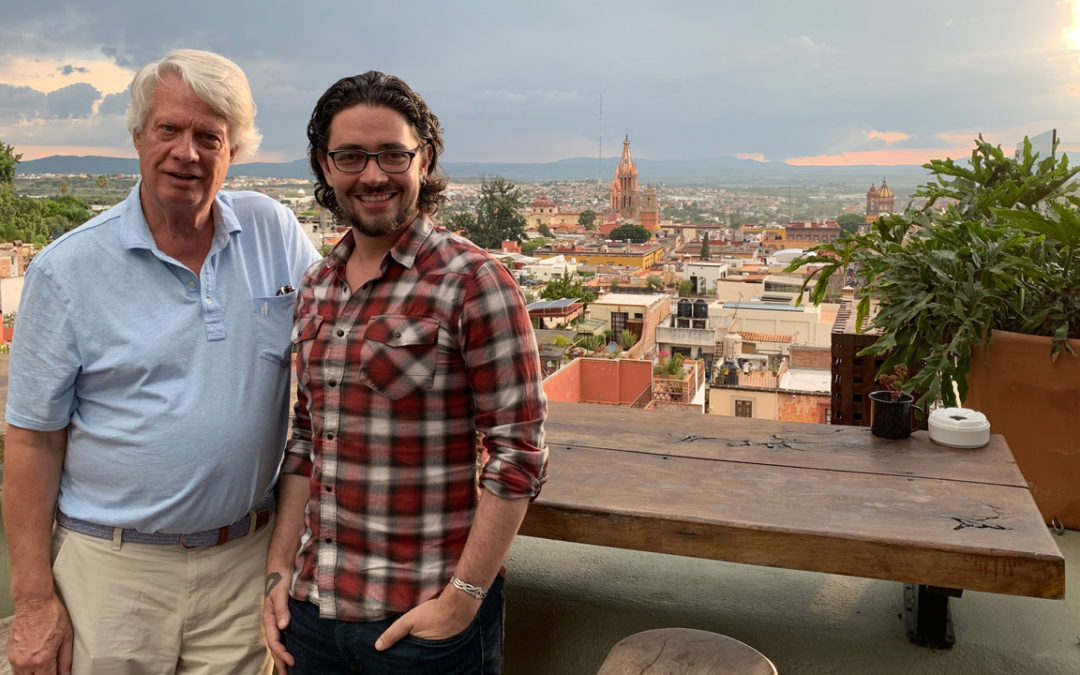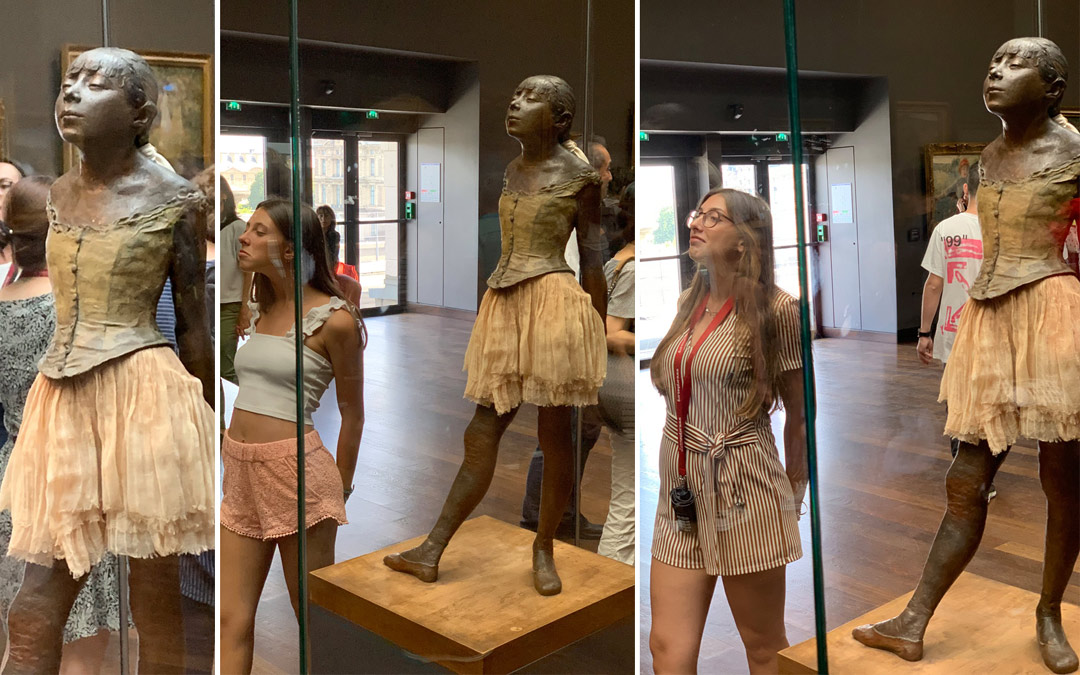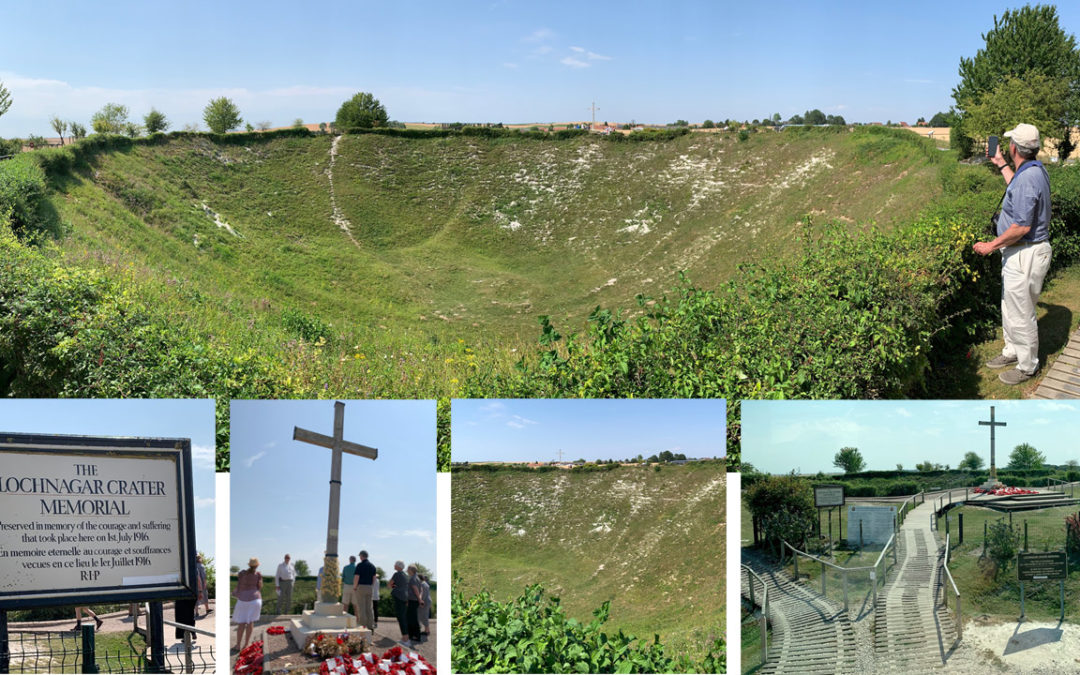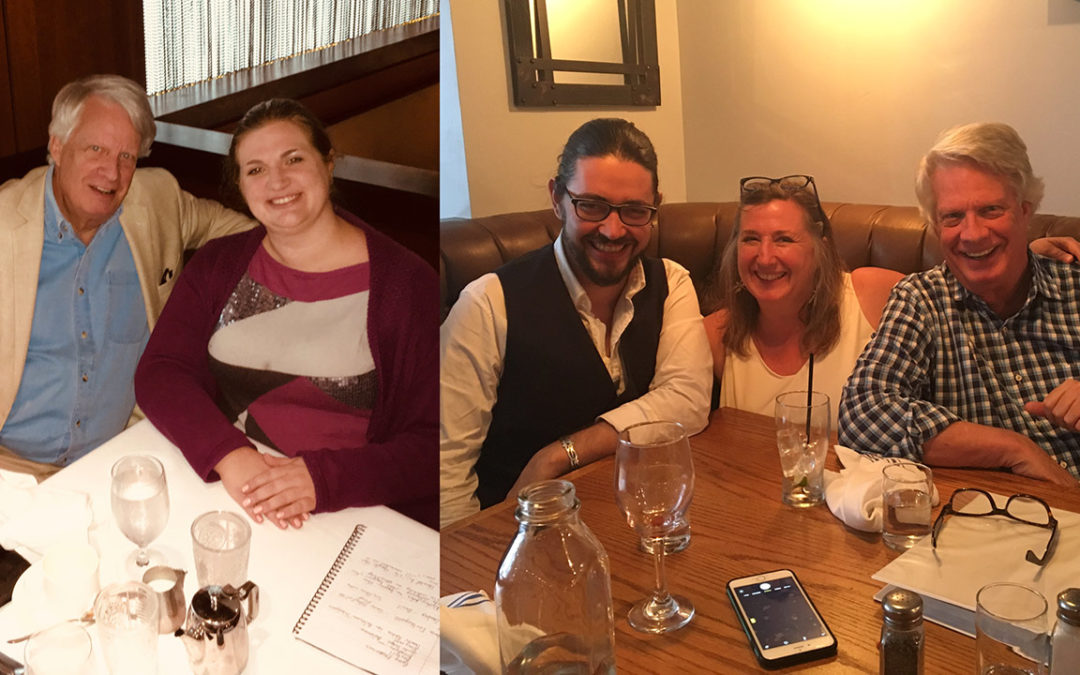
by Robert Bowie, Jr. | Aug 13, 2019 | Operetta, Travel
Is this how you make an operetta? I swear Christian De Gré Cárdenas and I are only following the charter of our employer, Mind the Art Entertainment, which requires, ”Make Art and Have Fun.”
We are five hours north of Mexico City, holed up in San Miguel de Allende, diligently working over breakfast from 9:30 to 1:30, having a little lunch, perhaps a swim, back to work from 3:30 to 6:30, and then off to the rooftop bars, dinner, local beer, mezcal, and tequila.
This is a beautiful place with deep Mexican history rooted in its independence and, in the last 70 years, the arts. In the winter, American tourists and expats flood in, along with vacationing Europeans. In the summer, far fewer visitors come and generally only for the weekends. They come here to experience the battling mariachi bands around the church plaza, the three-star restaurants at a third of New York and European prices, the stunningly beautiful textiles, art work, and wall art. Here, you walk on cobbled streets older than any in the United States and are surrounded by color.
Christian has had numerous operettas performed in NYC, most recently based on the “seven deadly sins.“ I am honored to have been chosen to write the libretto for the final operetta based on the overarching sin of “pride.”
The first day together, we went over the script I wrote over the last several months, and we just talked about it. The second day, we went to work and went line by line, page by page through the first act. The third day, we worked through the second act and celebrated the harmony of our efforts with a big lunch on a rooftop overlooking the city.
This carrying out of our corporate responsibilities is serious business. Our assignment is to write a bawdy, irreverent “meta” piece (the actors can break character and speak to the audience). It is written in rhyme and hip hop and has a singing dog.
Our first few days have been so productive, we are ahead of schedule. Tomorrow, Christian continues to outline and compose the music while I adjust and continue to shape lines and rhythms. The next several days before we leave, we will shape the two efforts into one operetta and be prepared to have it ready in the fall to be sent out to investors and performance venues.
In the meantime, over the next week, we will continue to carry out our corporate duty.

by Robert Bowie, Jr. | Aug 8, 2019 | Featured, Poetry, Travel
As I turned away from Degas’ statuette of a dancer at the Musee D’Orsay in Paris last week, I almost missed the imitators. The imitators were lining up, looking at the statuette and striking a pose. The reaction was not mocking and somehow not disrespectful. The imitators were reacting to a man-made object created out of his imagination. The interaction is what mattered.
When I was in high school, I read a line from W. H. Auden that said “poetry makes nothing happen.” It stopped me in my tracks. It was the late ’60s. I wanted to do things that made things happen. I became a lawyer. I made things happen.
Now I know I misread the line. Auden was making fun of all those things that appear to make things happen but really don’t. Art makes things happen in that it offers the chance to interact with a created object from another person’s imagination.
But why does that matter? It seems that at the center of our existence we travel a number of years in the mundane pursuit of what we need to survive, but art offers a conversation with another who is, or has been, on that same journey. It offers, but does not demand, this conversation.
In the same gallery, hordes of people were moving from picture to picture, cell phones out, photographing the exhibit as they hurried by. They had not accepted the offer. They were just capturing the object.
The imitators had accepted the offer. They were interacting with the Degas’ statuette.
The conversation can happen in many forums but it is always between the artist and the self. It can come through some or all the senses. It can be theoretical. It can come with an artist’s demand for your attention, as with Andy Warhol asking you to notice common objects, but for me it is always a very personal person-to-person communication.
It can also be environmental. On my way home, I noticed the statues in the park and the park in the city as I walk through. The art of the statue inside the art of the park surrounded by the mundane existence of the traffic and commerce of the city.
I found Auden’s quote:
“For poetry makes nothing happen: it survives
In the valley of its making where executives
Would never want to tamper, flows on south
From ranches of isolation and the busy griefs,
Raw towns that we believe and die in; it survives,
A way of happening, a mouth.”
In Memory of W.B.Yeats
(d. Jan. 1939)
He says all this better than I but I had to learn it for myself.

by Robert Bowie, Jr. | Aug 1, 2019 | Featured, Travel
It is almost impossible to describe the First World War in simple terms. It is unresolved as to how it evolved into the war it became — the number of casualties it caused easily exceeds eight million dead and double that in maimed and wounded — and its end probably was the beginning of the Second World War only twenty years later. Books and books and books continue to be written about it. It is a wellspring of scholarship and a mirror for the future and present.
There are two things it demonstrates to me, however. First, we seem to be incapable of maturing at the same speed as our ability to make weapons evermore capable of our mass destruction. Second, we seem to be able to commit ourselves blindly to use these weapons without realizing the extent of the destruction that we can cause. Both of these observations demonstrate the incredible capacity we have in the form of the “nation state” to destroy ourselves, despite our individual capacity to feel compassion, empathy, and kindness for each other on a daily basis as human beings who are not in a state of war.
Why have I attached a picture of a crater?
WWI introduced airplane warfare, submarine warfare, the machine gun, the tank, and gas warfare. The warfare was so intense that there are specific monuments dedicated to both missing soldiers and unidentifiable body parts.
So, is there something, a simple example from this war, that demonstrates redemption? Yes, I think there is.
Both sides built tunnels for days and months for incredible distances under entire towns and enemy lines to set explosives. Some of these tunnels were only four feet wide and three-and-a-half feet high. The excavation of the dirt was extremely difficult and endlessly time consuming. Imagine the commitment. Imagine the claustrophobia. Imagine the amount of explosives that then had to be carried underground to blow up a town or an enemy stronghold.
As I have said, the picture I have provided is of a crater. It is thirty to forty feet deep and almost a football field wide. The explosion sent debris four thousand feet in the air and killed and injured people who were never found. I took the photograph from the far side. There is a monument on the other side which, if you look closely, is a cross that is several stories high.
In the alternative, it has been documented that during a one-day armistice for Christmas the soldiers from both sides came out over their trenches, exchanged chocolate and cigarettes, and sang Christmas carols together.

by Robert Bowie, Jr. | Jul 16, 2019 | ONAJE, ONAJE Update
Onaje is moving up the ladder in New York.
It is funny how you take a new path and learn the same lesson. Trusted friends, credibility, and hard work were everything in creating my law firm almost 30 years ago and now I learn the same is true in the world of New York theater.
When I sold my controlling interest in my law firm I had decided that I wanted to be equally as successful as a playwright. The problem was I had to make up for 40 years of lost time. I decided I would become the oldest playwright ever to apply to Yale Drama school. I succeeded in being the oldest playwright ever to be rejected by Yale Drama school.
So with my objective still firmly in mind, I decided I would have to change my approach. I took a class at the Commercial Theater Institute in New York, not in playwriting, but in producing. After the first morning, the students gathered outside and shared conversation during a brown bag lunch. As they went around the circle, they all talked about plays they were hoping to produce. When it came to me, I confessed I did not want to be a producer. I wanted them to produce me. I got a laugh and two offers which led to staged readings in San Francisco, NYC, and Los Angeles and I made new friends.
One, Parker Bennett of Aligned Online, signed on to teach me how to create and manage my new website. Following the precedent set with Yale, I proved myself to be an unworthy student, but Parker became a trusted friend, took over the website, and became my guru on all things pertaining to script writing and the business generally, since he is an accomplished writer in his own right.
The following summer I continued on my path and was admitted into the Producers’ Class at the O’Neill Festival in Connecticut and there I met Sue Conover Marinello, the future producer of Onaje at FringeNYC and Christian De Gré Cardenas, who would become an indispensable ally at FringeNYC and ultimately the composer for “The Voice of the People,“ after I was asked to write the libretto by Mind the Art Entertainment.
Sue, Christian, Parker, and now Katie Marinello — who is handling our presence on Instagram and Twitter — have all become indispensable trusted friends.
When Onaje was chosen to be performed at FringeNYC, Sue Conover Marinello asked Kevin R Free, the highly respected NYC director, to direct. He read the script, but had a scheduling conflict and was unable to join us at FringeNYC.
During the pre-rehearsal and rehearsal stages leading up to the performances, Onaje was lovingly shaped and focused with the ideas of additional friends: the actors, director, stage manager, and others. It opened to sold-out performances and rave reviews, largely due to the tireless work of Sue Conover Marinello as its producer.
Sue decided that she wanted to take Onaje up the ladder in New York and elsewhere. She wanted Kevin R Free.
She took me to see several 10-minute plays directed by Kevin for Kelly Girod, the Obie winner and manager of The Fire This Time Theatre Festival. Based on the successes in New York, Sue took the script to Kevin’s agent, John Essay, again. By coincidence, John had seen the reviews of Onaje and asked that Kevin revisit the play.
The path is always different but the results are always the same. When we all met each other for the first time during a Zoom conference call about a month and a half later, Kevin had fresh ideas that highlighted missed opportunities in the script. He had X-rayed it and knew the bone structure perfectly. I joked with him that it was almost as if he had a lawnchair in my brain.
The same lesson is re-learned: trusted friends, credibility, and hard work make the apparently impossible dream happen. I’m so excited to be reaching for the next rung of the ladder.
Stay tuned.

by Robert Bowie, Jr. | Jul 9, 2019 | Featured, Humor, Personal, Poetry
As a lawyer I was your advocate, but now as a Poet my job is to help you see all things differently. For example:
I have a silver gray antique BMW Z3 convertible. It looks like a ridiculous self important go-cart. It has five gears and a stick shift. It is loud. It is very low to the ground and only my head sticks out of the top.
When I drive this car I am publicly on display as a self-confessed idiot. Sort of a clown. Young boys with fresh learner’s permits pull up to me at stop lights, rev their engines, and laugh at me. I should be embarrassed.
But if I tell you, “I know I look like an old man driving a roller skate…” you laugh — but once you’ve imagined me in this car, you look at the car and the old man differently. It may be funny or it may be sad, but as a poet I have that ability to make you see things differently .
It is the ability to break the mold that we all live in and take for granted, again and again and again. The cement truck pours and we instantly take for granted that hardening cement and live with those forms forever. Poetry has the ability to break what is permanent and make it new by presenting it differently.
When I write a poem or a play I am asking you to hear my voice, look through my eyes, and see the “flash” vision that I create out of what we live in and take for granted together. I am driving the same roads, obeying the same traffic lights, and stalled in the same rush-hour traffic as you are. I’m using the same language and your words but I am aware of the sound of the words and the rhythm of our shared language in order to create that “flash” of the vision I want to create: “The old man driving a roller skate.”
That is the poet’s work. I must jackhammer out of existence something you have seen in your imagination, perhaps forever.
Let me give you two “flash” examples. Two quick comic examples from the best Poet of the English language: Shakespeare describes a drunkard who is upchucking on the street as, “Speaking with a full flowing stomach,“ or snidely describes a couple in an illicit affair as, ”being a beast with two backs.” In a “flash,” he can help you imagine what you expect, differently.
The job of the Poet is to bring you back to before the cement truck came into your life.





